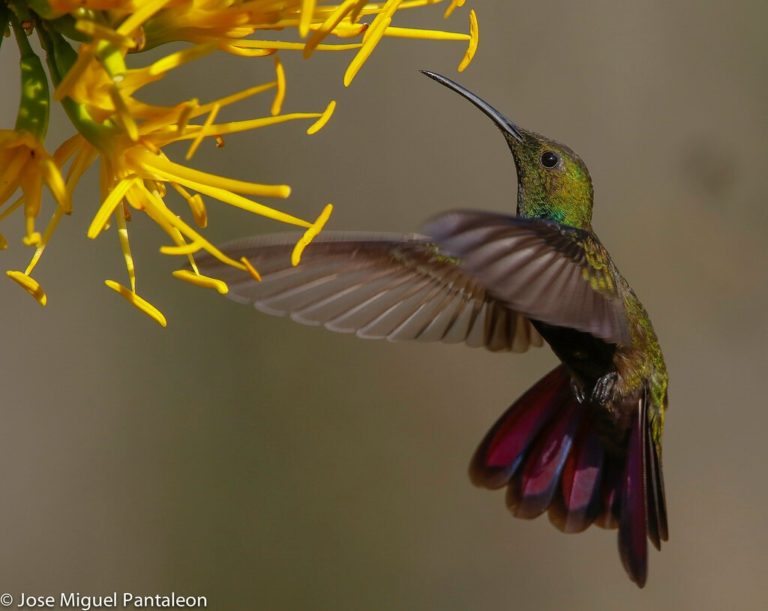Birdfinding.info ⇒ Common, widespread, and easy to find across Hispaniola. Can be found in coastal resort areas, such as Punta Cana, and in urban areas, including Santo Domingo, where it is usually present in the National Botanical Garden. In the southwestern D.R., it is most likely to be found along the coast from Barahona south, or in scrub or dry forest: e.g., along the Rabo de Gato Trail and at low elevations of Alcoa Road.
Hispaniolan Mango
Anthracothorax dominicus
Endemic to Hispaniola and its satellite islands (Île-á-Vache, Tortue, Gonâve, Beata and Saona), where it is widespread and common at low and middle elevations in woodlands, scrub, and gardens. Most numerous in dry forests and semiopen habitats, but also occurs in humid forests.
Identification
A large hummingbird with a decurved bill. Not likely to mistaken for any other species in its range.
Male appears all-dark in poor light, but when illuminated, its upperparts gleam bright green, or sometimes coppery, its throat greenish-yellow, and its breast and belly deep indigo.
The male’s tail may appear chestnut, bronze, or purple, depending on the lighting.
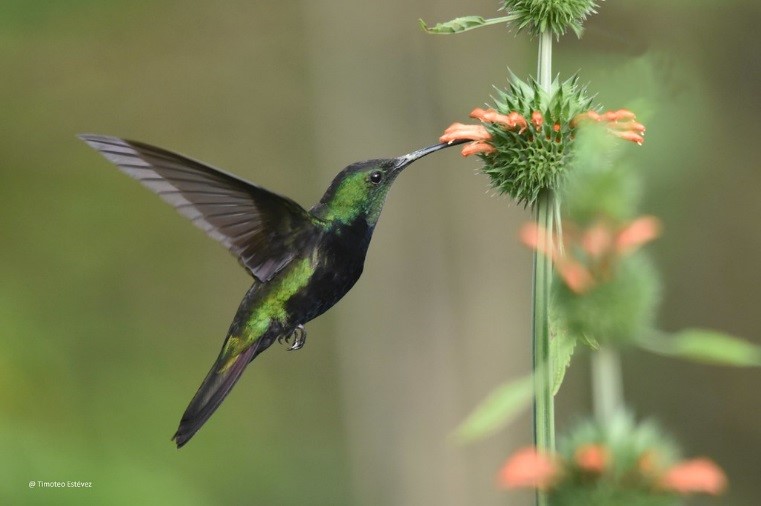
Hispaniolan Mango, male showing coppery iridescence on upperparts. (Dominican Republic; April 26, 2017.) © Timoteo Estévez
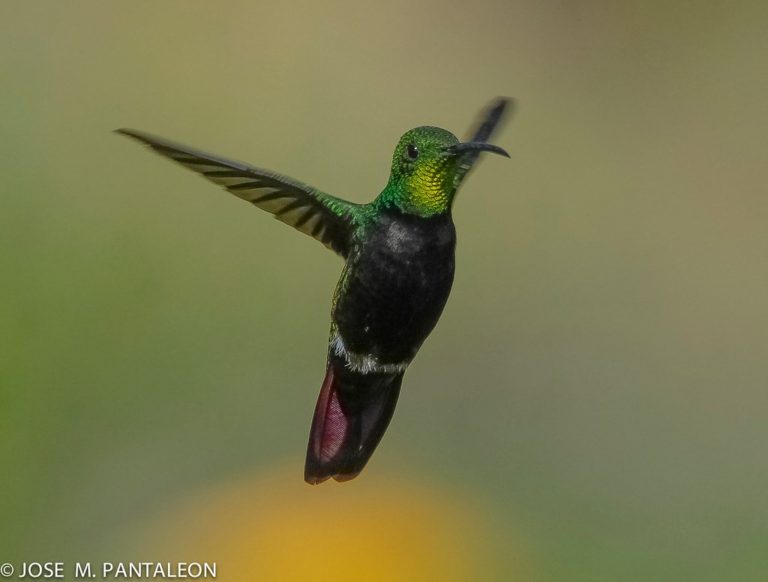
Hispaniolan Mango, male showing yellowish throat and black underparts. (Cordillera Central, Dominican Republic; April 28, 2013.) © José M. Pantaleón I.
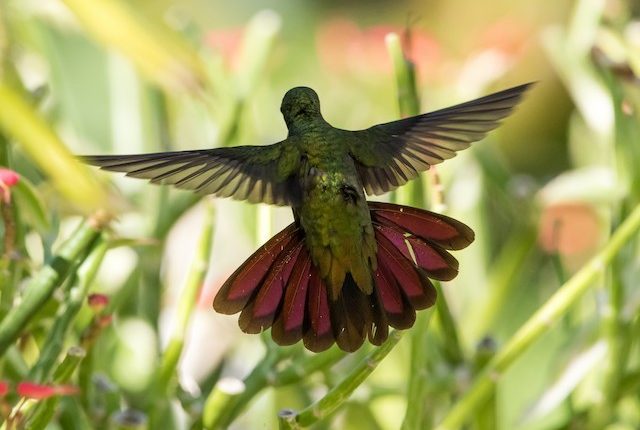
Hispaniolan Mango, male showing purplish outer tail feathers. (Punta Cana Ecological Reserve, Dominican Republic; March 7, 2016.) © Hank Davis
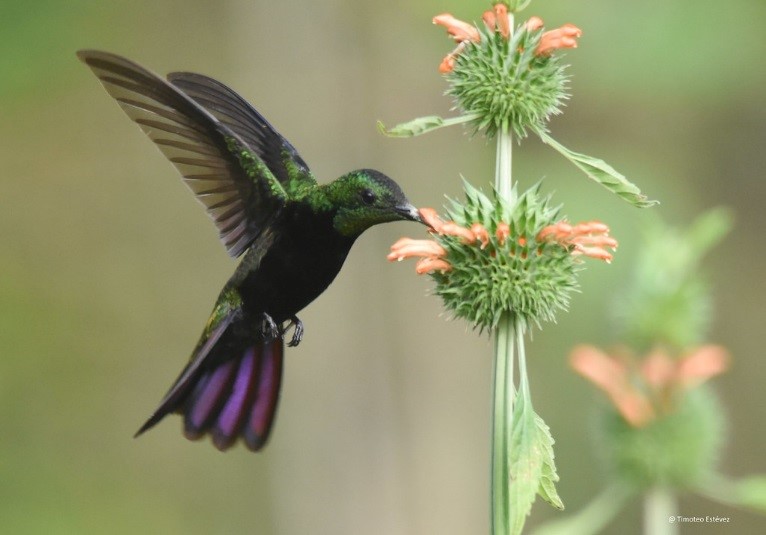
Hispaniolan Mango, male showing black underparts and purplish tail. (Dominican Republic; April 26, 2017.) © Timoteo Estévez
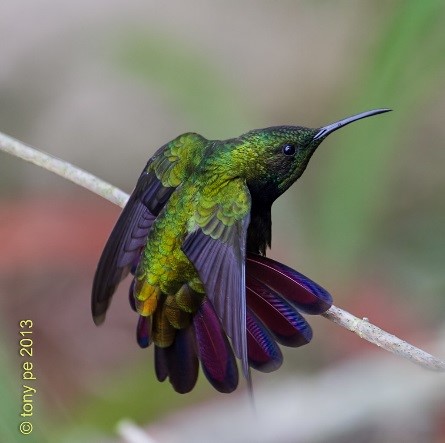
Hispaniolan Mango, male. (Ébano Verde Scientific Reserve, Dominican Republic; December 20, 2013.) © Tony Pe

Hispaniolan Mango, male. (Sierra de Bahoruco, Dominican Republic.) © José M. Pantaleón I.
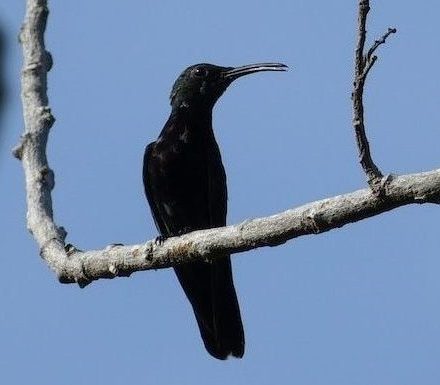
Hispaniolan Mango, male appearing entirely black in unfavorable lighting. (Los Haitises National Park, Dominican Republic; July 29, 2018.) © Mary Corporan Dunn
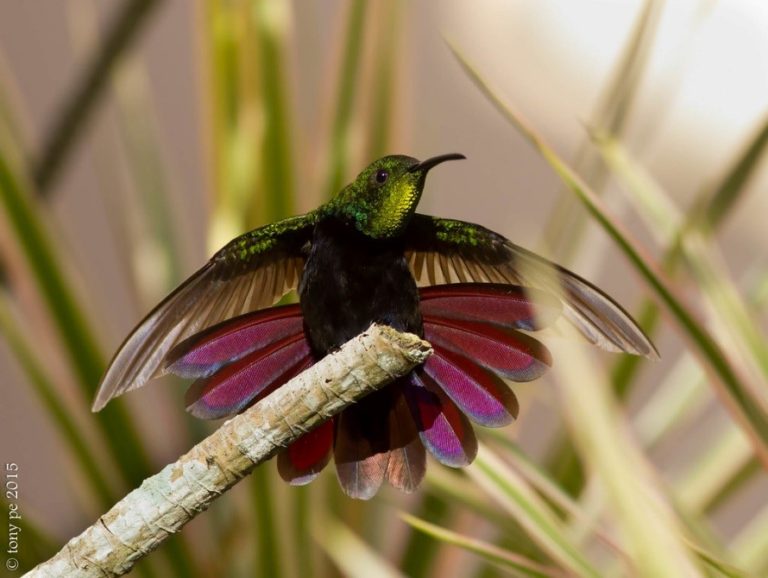
Hispaniolan Mango, male showing purplish tail and glowing throat. (2015.) © Tony Pe

Hispaniolan Mango, male showing coppery iridescence on the upperparts and indigo on the breast. (Dominican Republic; October 6, 2010.) © Carlos de Soto Molinari
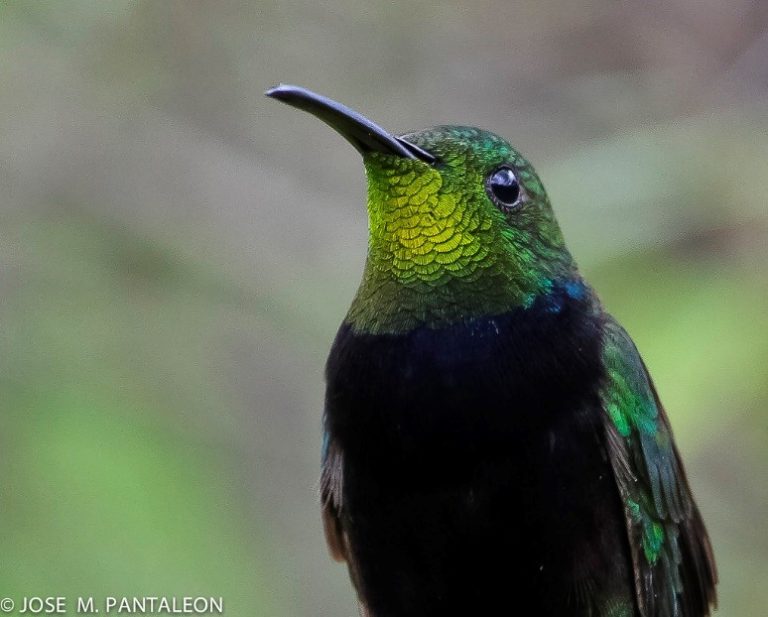
Hispaniolan Mango, male. (Sierra de Bahoruco, Dominican Republic.) © José M. Pantaleón I.
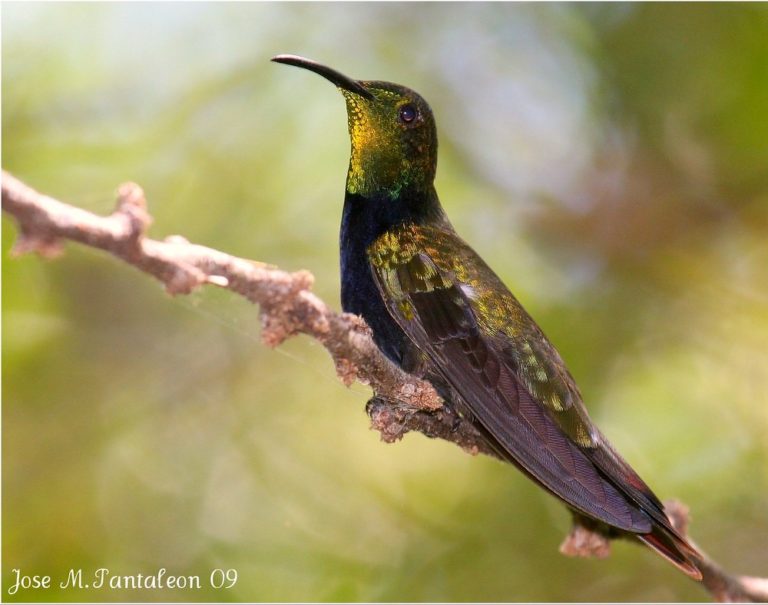
Hispaniolan Mango, male showing bronzy-green or yellowish iridescence on upperparts and throat. (Puerto Alejandro, Barahona, Dominican Republic; October 25, 2008.) © José M. Pantaleón I.
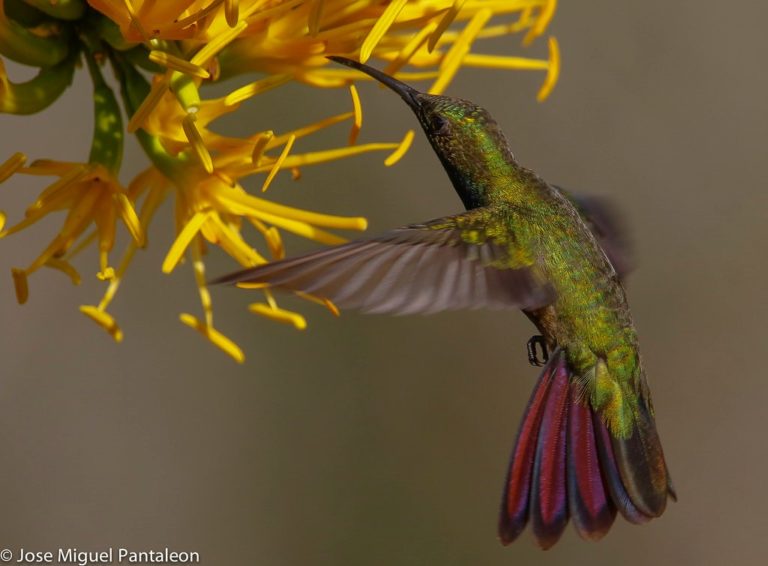
Hispaniolan Mango, male showing bronzy-green upperparts and purplish outer tail feathers. (Puerto Escondido, Dominican Republic; April 8, 2016.) © José M. Pantaleón I.
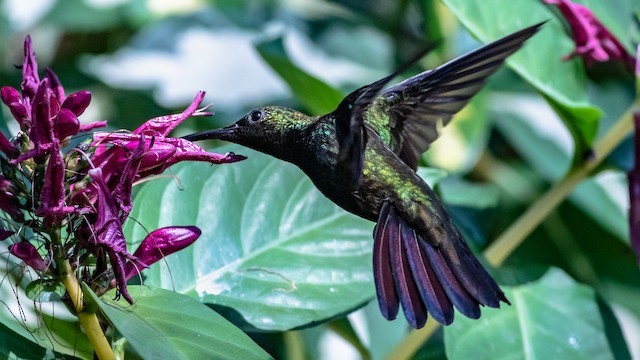
Hispaniolan Mango. (Roi Christophe, Haiti; March 17, 2019.) © Mike McGovern
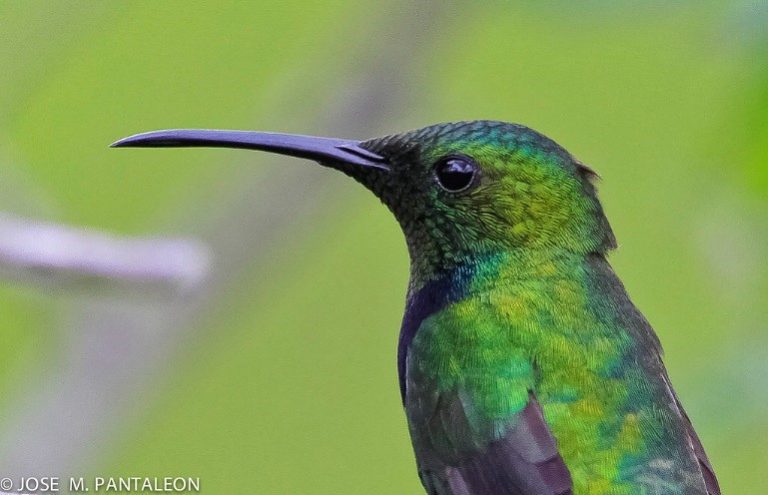
Hispaniolan Mango, male. (Sierra de Bahoruco, Dominican Republic.) © José M. Pantaleón I.
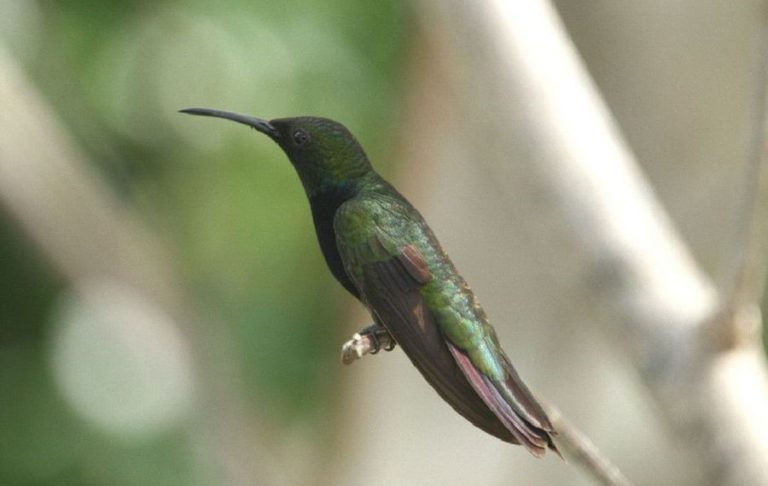
Hispaniolan Mango, male appearing dull green and black in unfavorable lighting. (Punta Cana, Dominican Republic; June 2006.) © Conorbirda2
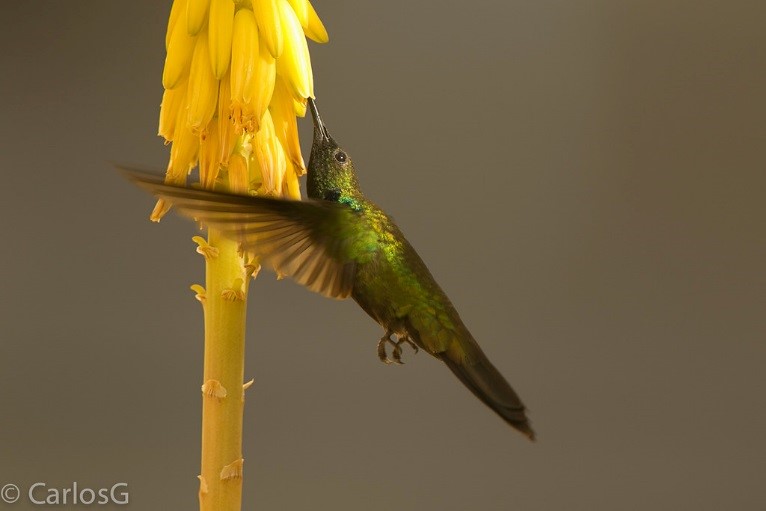
Hispaniolan Mango, male showing bronzy-green iridescence on upperparts and throat. (Ensanche Alma Rosa, Santo Domingo, Dominican Republic; January 21, 2018.) © Carlos Gomez

Hispaniolan Mango, male showing yellowish throat and black underparts. (Rabo de Gato Trail, Dominican Republic; March 8, 2014.) © Stephen Gast
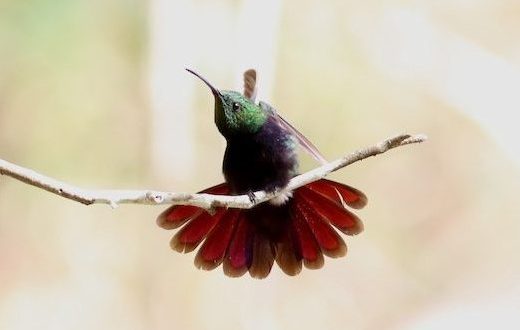
Hispaniolan Mango, male showing reddish tail feathers. (Altos de Chavon, La Romana, Dominican Republic; March 11, 2015.) © John Sullivan
The female has mostly whitish underparts with green sides and flanks. Basic coloration varies widely with differences in lighting. Similar to female Hispaniolan Emerald, but larger, with a much longer, decurved bill.
When the tail is folded, the upperside usually appears coppery. When the tail is spread, the outer feathers show large rusty patches near the base and narrow white tips.
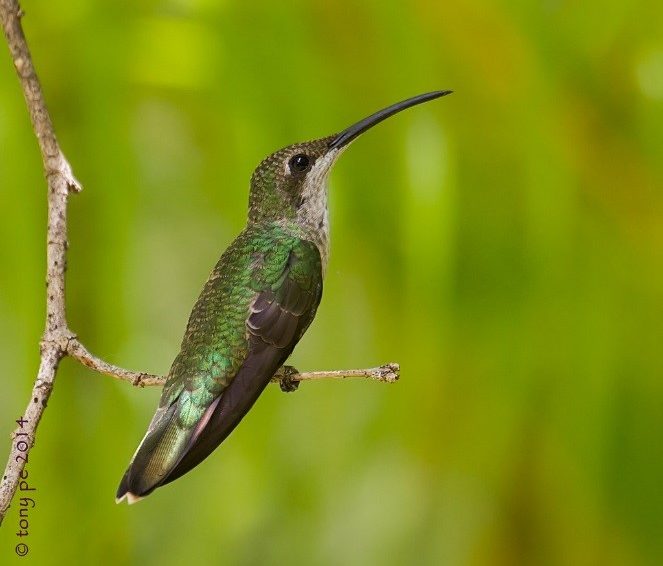
Hispaniolan Mango, female. (Santo Domingo, Dominican Republic; April 8, 2014.) © Tony Pe
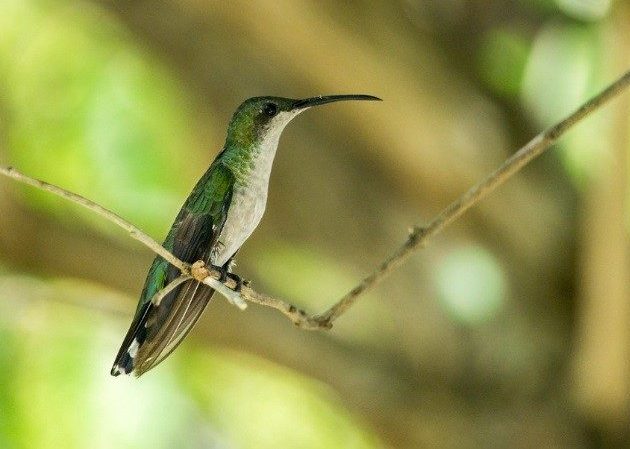
Hispaniolan Mango, female showing typical green-and-white coloration. (Santo Domingo, Dominican Republic; May 26, 2018.) © Issai Campos
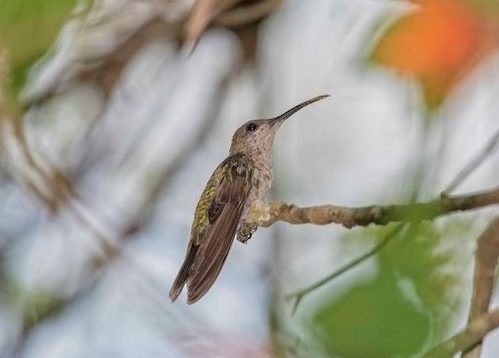
Hispaniolan Mango, female showing indistinct coloration. (Jardín Botánico Nacional, Santo Domingo, Dominican Republic; April 15, 2017.) © Ricardo Tonos
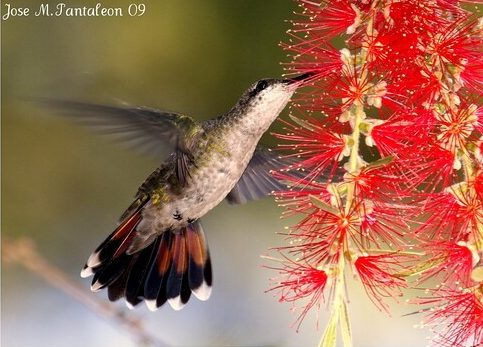
Hispaniolan Mango, female. (Cordillera Central, Dominican Republic; September 19, 2009.) © José M. Pantaleón I.
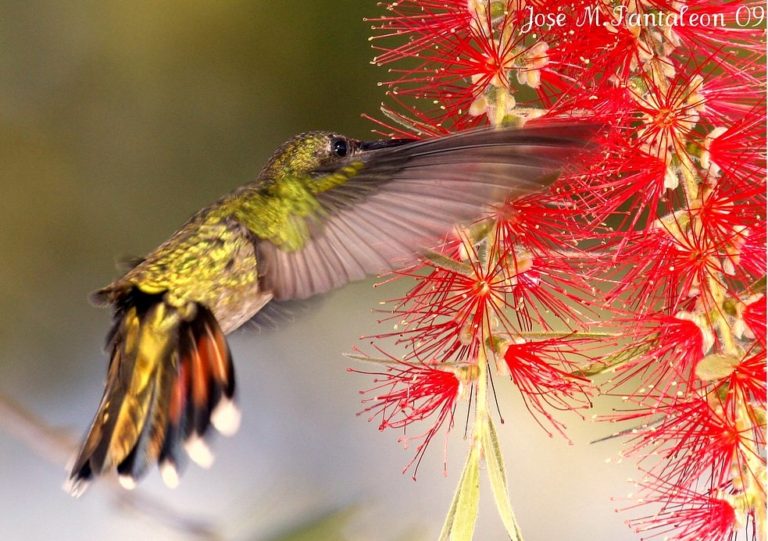
Hispaniolan Mango, female showing rusty patches and white tips on outer tail feathers. (Cordillera Central, Dominican Republic; September 19, 2009.) © José M. Pantaleón I.
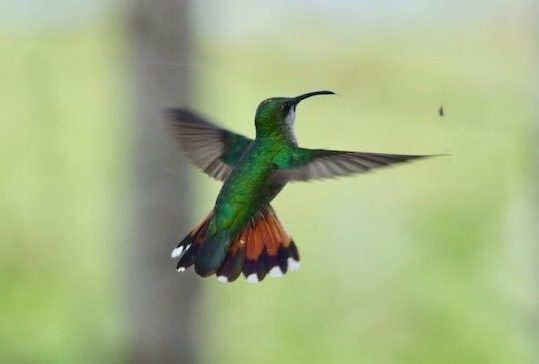
Hispaniolan Mango, female showing rusty patches and white tips on outer tail feathers. (Los Haitises National Park, Dominican Republic; February 10, 2018.) © Gil Ewing
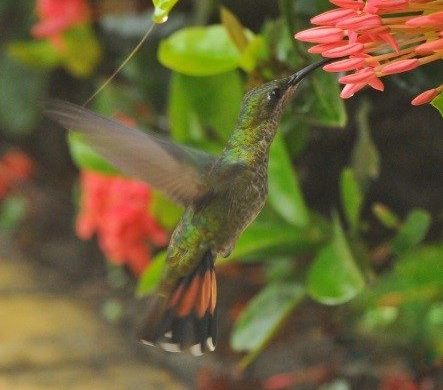
Hispaniolan Mango, female showing rusty patches and white tips on outer tail feathers. (Bávaro, Dominican Republic; July 2009.) © Peter Withers
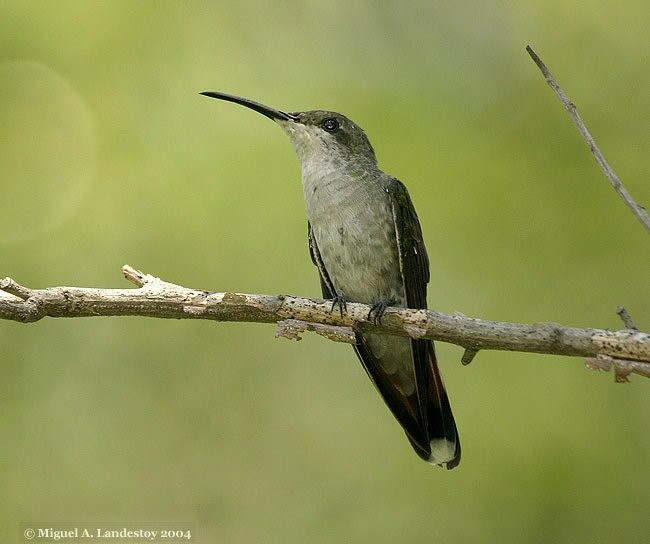
Hispaniolan Mango, female. (Dominican Republic; 2004.) © Miguel A. Landestoy T.

Hispaniolan Mango, female showing mostly coppery tail, when folded. (Lomas Lindas, Dominican Republic; November 30, 2014.) © Dax M. Román E.
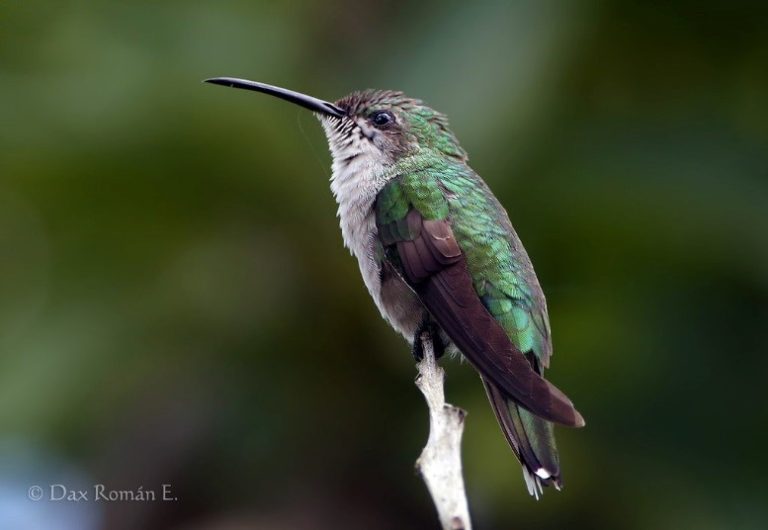
Hispaniolan Mango, female. (Lomas Lindas, Dominican Republic; October 13, 2013.) © Dax M. Román E.
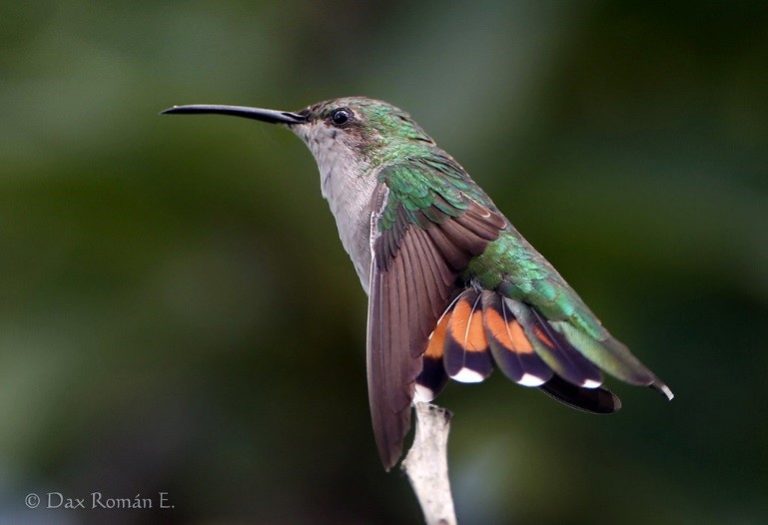
Hispaniolan Mango, female showing rusty patches and white tips on outer tail feathers. (Lomas Lindas, Dominican Republic; October 13, 2013.) © Dax M. Román E.
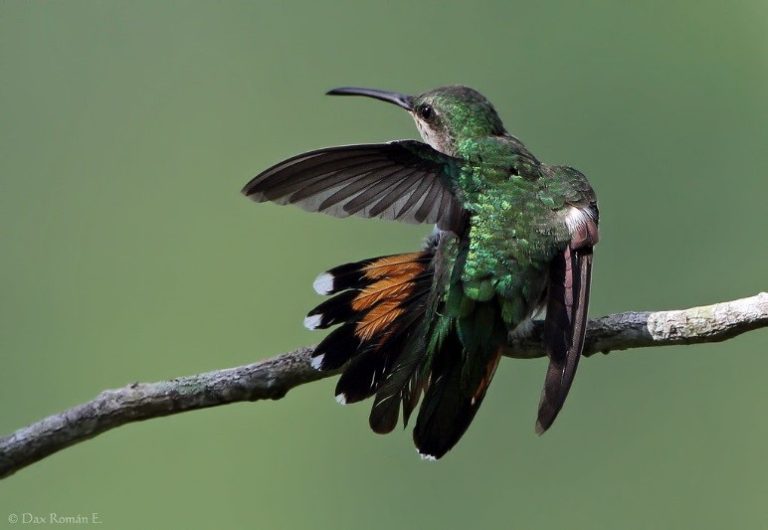
Hispaniolan Mango, female showing rusty patches and white tips on outer tail feathers. (Lomas Lindas, Dominican Republic; November 24, 2013.) © Dax M. Román E.
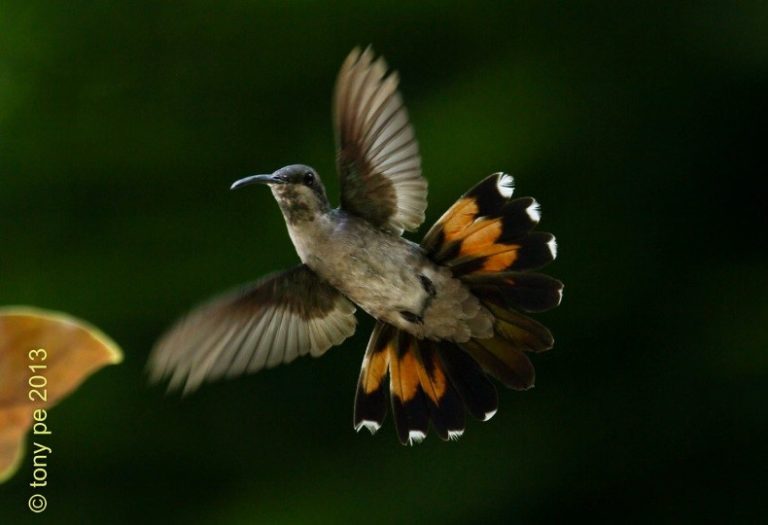
Hispaniolan Mango, female showing rusty patches and white tips on outer tail feathers. (Dominican Republic; 2013.) © Tony Pe
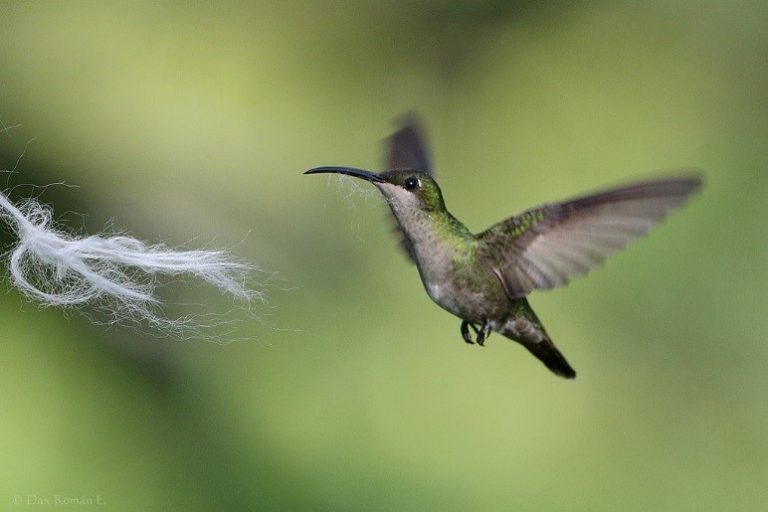
Hispaniolan Mango, female. (Lomas Lindas, Dominican Republic; November 30, 2014.) © Dax M. Román E.
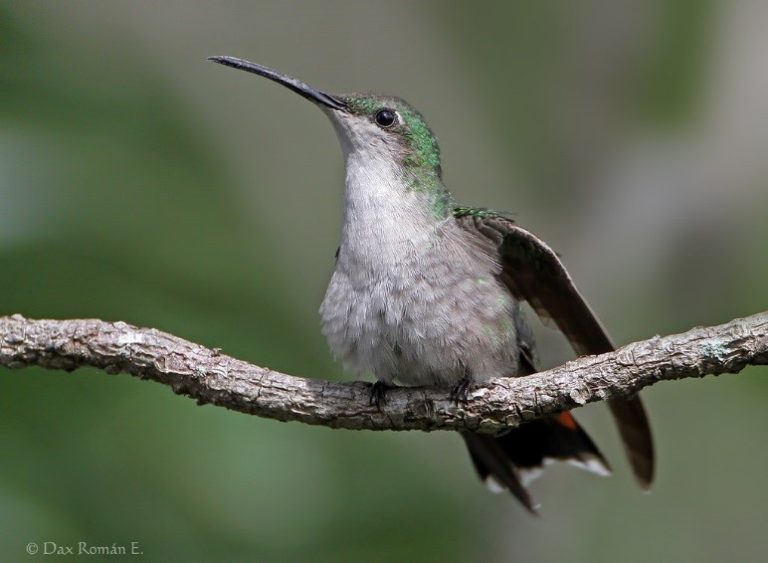
Hispaniolan Mango, female appearing large due to extended posture and raised breast feathers. (Lomas Lindas, Dominican Republic; November 17, 2013.) © Dax M. Román E.
Immature males resemble females, but the underparts are white with a variable amount of the adult male’s coloration on the throat and extending centrally down the breast. Tail resembles the adult male’s, but the outer feathers typically have less extensive purplish patches and narrow white slivers at the tips.
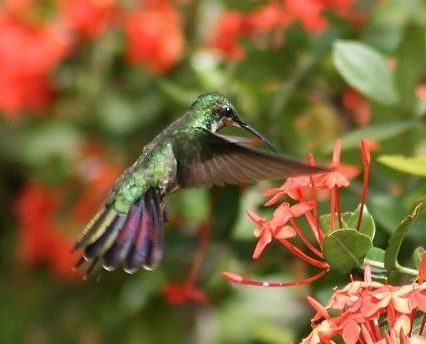
Hispaniolan Mango, immature male showing purplish patches and white slivers on the tips of the outer tail feathers. (Dominican Republic.) Photographer unknown
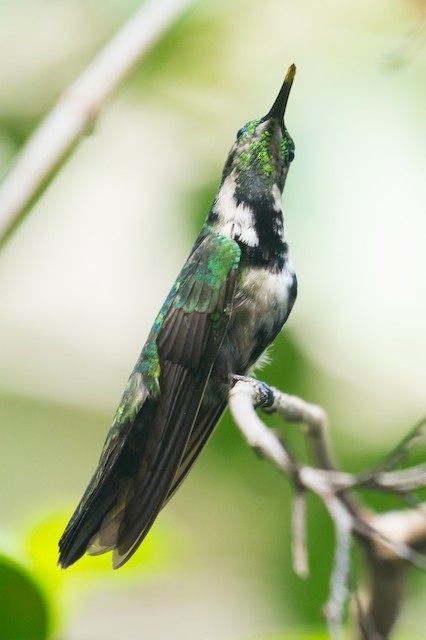
Hispaniolan Mango, immature male in a messy, intermediate molt stage. (Jardín Botánico Nacional, Santo Domingo, Dominican Republic; October 16, 2016.) © Patrick V.
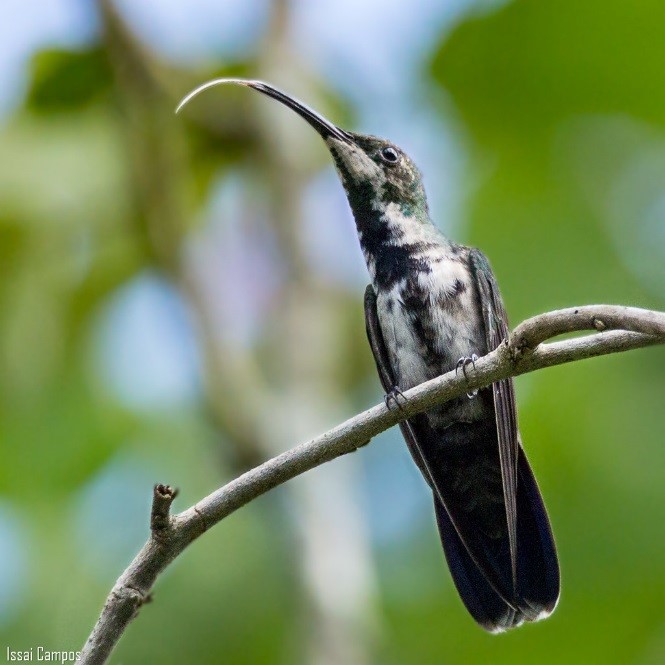
Hispaniolan Mango, immature male with tongue extended. (Jardín Botánico Nacional, Santo Domingo, Dominican Republic.) © Issai Campos
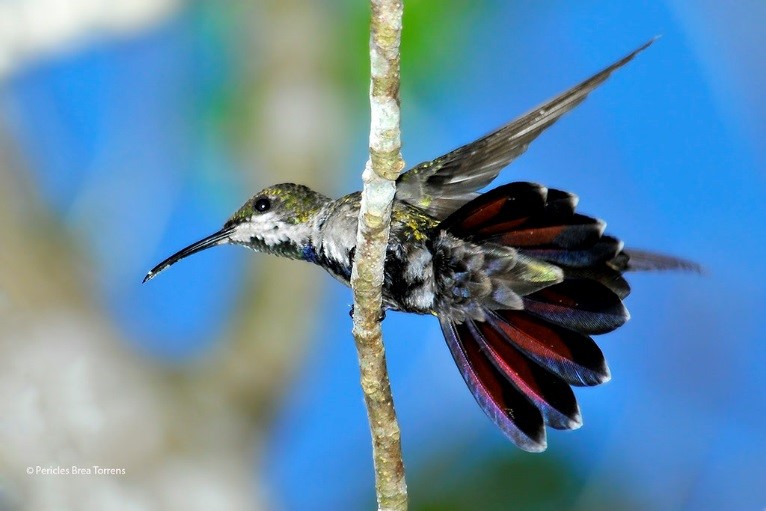
Hispaniolan Mango, immature male showing purplish patches and white slivers on the tips of the tail feathers. (Santo Domingo, Dominican Republic; December 12, 2009.) © Pericles Brea Torrens

Hispaniolan Mango, immature male showing dark stripe on throat and breast. (Santo Domingo, Dominican Republic; April 27, 2014.) © Tony Pe
Notes
Monotypic species. Traditionally considered conspecific with Puerto Rican Mango, together comprising the Antillean Mango, A. dominicus, but they seem distinct enough in size, shape, and plumage to be regarded as separate species (see below).
Frontiers of Taxonomy: Hispaniolan and Puerto Rican Mangoes. The Handbook of the Birds of the World treats Hispaniolan and Puerto Rican Mangoes as separate species, citing size and plumage differences. This conclusion seems likely to be adopted universally, as the differences are striking. Structurally, Hispaniolan is nearly an inch longer than Puerto Rican and has a proportionately shorter bill.
Males of the two forms differ significantly in plumage. Hispaniolan’s upperparts usually appear dark or muted green, but sometimes gleam coppery or topaz, whereas Puerto Rican’s upperparts typically gleam yellowish. Hispaniolan’s underparts are solid indigo from the upper breast to the belly, whereas Puerto Rican’s underparts have a small indigo patch on the chest, green on the sides and flanks, charcoal gray on the lower breast, and usually some white on the belly.
References
eBird. 2018. eBird: An online database of bird distribution and abundance. Cornell Lab of Ornithology, Ithaca, N.Y. http://www.ebird.org. (Accessed October 28, 2018.)
Fogden, M., M. Taylor, and S.L. Williamson. 2014. Hummingbirds: A Life-size Guide to Every Species. HarperCollins, New York.
Latta, S., C. Rimmer, A. Keith, J. Wiley, H. Raffaele, K. McFarland, and E. Fernandez. 2006. Birds of the Dominican Republic and Haiti. Princeton University Press, Princeton, N.J.
Raffaele, H., J. Wiley, O. Garrido, A. Keith, and J. Raffaele. 1998. A Guide to the Birds of the West Indies. Princeton University Press, Princeton, N.J.
Schuchmann, K.L., P. Boesman, and G.M. Kirwan. 2017. Hispaniolan Mango (Anthracothorax dominicus). In Handbook of the Birds of the World Alive (J. del Hoyo, A. Elliott, J. Sargatal, D.A. Christie, and E. de Juana, eds.). Lynx Edicions, Barcelona. http://www.hbw.com/node/55406. (Accessed September 17, 2017.)
